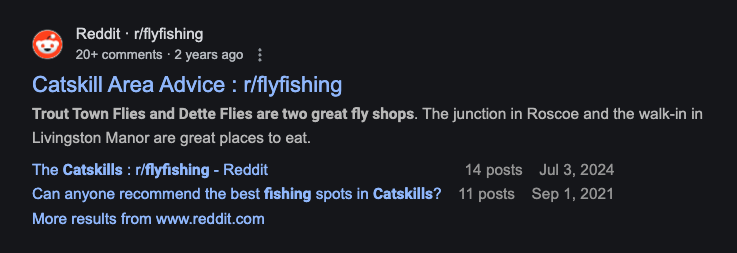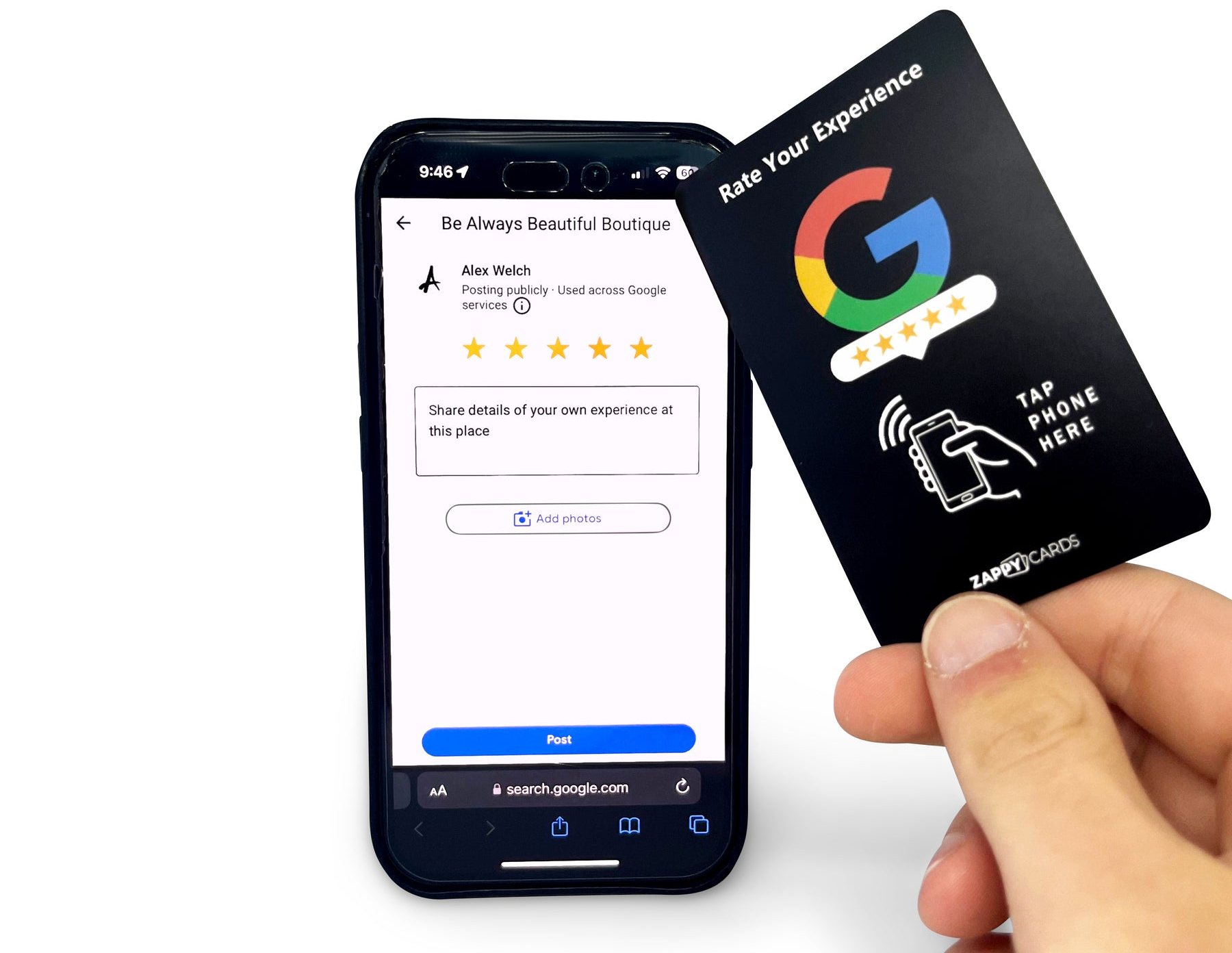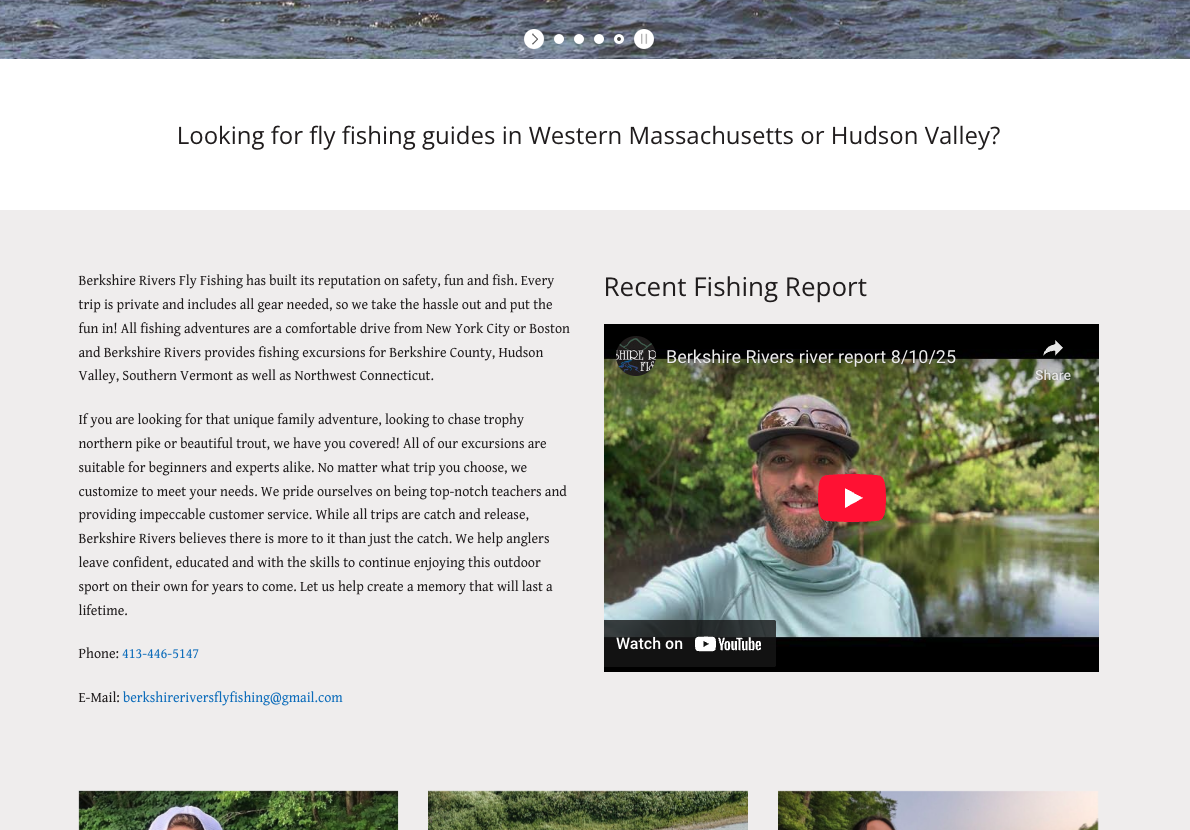Small tweaks – big results. Outfish your competition on Google with these under-the-radar tactics.
Every fishing guide wants to be on page one of Google. That’s where the calls, emails, and bookings start rolling in. However, “page one” is limited – cluttered up with ads, YouTube videos, social media links like Reddit and Facebook, related searches, and a handful of spaces for organic website listings that everyone and their mother is trying to fit into.
I don’t mean to sound pessimistic here… Most charters, guides, and lodges in a given area market their businesses the same ways: Instagram and Facebook pages, similar websites/pictures/pricing, maybe some social media or Google Search ads, occasional fishing report, maybe they get a booth at fishing or sportsmans event.
These are all valid strategies, but if you really want your fishing website to stand out and climb Google’s rankings, you need to get a little sneaky with your tactics. Whenever I’m on client work calls talking about Google Ads campaigns – guides, charters, and lodge owners are always asking “What else can I be doing?”. I find myself mentioning the same strategies often, but with recent changes to how Google ranks websites there are some new honorable mentions I felt were worth compiling into a blog post.
Here are some proven, under-the-radar strategies that can help your charter, guide service, or lodge website steal eyeballs and improve rankings online.
1. Connect Your Sitemap To Google Search Console
Google has a bunch of properties – Google Mail. Google Analytics, Google Business Profile. Google Ads. Google Workspace. Google this, Google that. But one tool most fishing business owners aren’t familiar with is Google Search Console – and it just might be one of the most valuable long-term. It’s worth a deep-dive, but you really only need to do one thing.
Common website platforms like WordPress, Wix, and Squarespace make this easy, but make sure you connect your fishing website with Google Search Console and make sure your sitemap has been submitted for indexing – this is how your website “talks” with Google. It tells them what pages you have, what you want indexed, and how you’re showing up in search results. Once you’re set up, you can see which keywords are driving clicks, which pages are ranking, and where you’re missing opportunities. It’s like having a fishing report for your website.
- WordPress: Install the Site Kit plugin — easy and free.
- Wix or Squarespace: They make connecting even simpler with built-in integrations.
While just a standard Google Analytics account can tell you how much organic traffic your website is getting, Google Search Console tells you what that organic traffic is coming from – and where it’s going. If you plan on guiding for years to come, this is a simple step to help speed up the growth of your business. Even if you never look at it again after connecting your website, at least you’ve given Google full clarity into the content on your site.
2. Hijack Website Traffic From Newly Ranking Reddit Posts
Google has been pushing Reddit links heavily on page one of search results after bigtime changes announced at the annual Google conference earlier in 2025. Try doing some searches for your most important phrases and see what Reddit posts are being pulled in – I can almost guarantee you’ll find some relevant posts about your fishery.
This might just be the most valuable tip out of this entire blog post: create a Reddit account and comment on relevant posts with genuine responses using your charter/guide service name, keywords that make sense, and include a link to your website. Reddit is anonymous anyways. It’s a sneaky way to steal website traffic from pages already getting tons of visitors – even if the post on Reddit is old – Google is still pulling those links and prioritizing them on Google if the keywords in the post/title are relevant to the search. It can be a super easy way of getting a first page Google listing promoting your fishing guide, charter, or lodge.
For example, when I search “fly fishing in the Catskills”, which is about an hour south of where I live, I see two Reddit links showing on page one of search results. The one I’ve shown below is from someone asking about advice for fishing the area – and people jumped in suggesting fly shops and guide services. If I was a new guide trying to tap into the top Google listings in a fairly saturated market – you better believe I’d be commenting on posts like this one dropping my guide service name and website URL. This post is 2 years old and it’s the very first link I see on Google for that common search. This is absolute gold and something most competitors aren’t taking advantage of.
3. Rack Up Reviews With Zappy Cards
I am in no way affiliated with Zappy Cards, but I tell my fishing clients about them all the time. They offer a credit card style card you can keep in your boat bag, in the truck, in your fly shop, wherever makes it convenient for you. Then you simply ask clients – “Hey, if you enjoyed your time on the water today would you mind tapping your phone on here and then leaving me a review when you get a chance?”.
When clients tap their phone on these cards, it automatically pulls up your Google Business Profile with a 5-star review loaded and ready for them to write about their trip, and it’s also easy for them to upload the pictures they likely took from their phone. Nobody likes to heckle clients for reviews, or send a bunch of follow up emails after they’re gone trying to get them to find your actual business profile to leave a review.
Google reviews are a major factor in how your business ranks on Google, especially for the map portion. You should have a strategy in place for how you plan on growing your number of 5-star reviews!
4. Run Remarketing Campaigns using Google Ads
What if I told you for just $1 per day you could keep your best image and video content in front of people you KNOW have recently been to your website? If you were trying to advertise your fishing charter website on a budget – I’d say under $100 per month – my top recommendation would be setting up a Google Ads account and running what are called Display Remarketing ads.
This kind of campaign shows your ads to recent website visitors while they cruise sites like weather.com, or while they’re checking their gmail account, or watching Youtube. Plus, you have the ability to show ads to people for up to 540 days! I wouldn’t recommend bombarding people for that long, but you’ve got them for that long (I typically run these for 60-90 days if audience size allows). I like using these to promote whatever the next seasonal change is – like for a tarpon fishing guide, you could run ads December – March that say things like “Now Booking Spring Tarpon Season”. Or as a fishing lodge you could use these ads to stay top-of-mind during the longer decision making process – educating people on your accommodations, showing off your best fishing pictures, or encouraging people to book ahead for the following season.
Your competitors are likely running Google Search ads, but very few take the next step to run remarketing ads. Mostly because it’s not easy to set up without some technical expertise in Google Analytics, Google Tag Manager, and Google Ads. I do think it’s important to be running Google Search ads to fuel your remarketing audiences with people you know just searched for what you offer, so if you’d like help getting campaigns like these ramped up for your charter or guide service don’t hesitate to reach out.
5. Weasel Your Way Onto Info Sites
This one is a little more area-dependent, but I struggle to find a fishery this strategy wouldn’t work for. Sticking with the Catskills example, if I do a Google search for “catskills fly fishing” – I see some guide sites, but the 3rd listing in search results is an info site called visitcatskills.com which leads to a guide directory page that looks to be free to submit a listing to.
Again – easy, free, quick ways to create more paths for people to find your fishing website. Plus, you’re gaining what are called “backlinks” in SEO slang – which means a website has a link sending traffic to your website – and it’s a major signal to Google that you have credible content on your site and deserve to be shown more.
Do some research for your area and see what non-outfitter sites show up on Google – and see if there’s an opportunity to either be listed in a local directory or collaborate somehow. An easy way to find opportunities is to search “things to do in YOUR LOCATION” and reach out directly to non-guide websites that are ranking on page one – you’ll often find list-style blog posts showing a bunch of things to do in your area, and I’ve had clients weasel their way onto posts like that just by reaching out and asking. If your fishing website isn’t getting many visitors, something like this could easily double your traffic.
6. Leverage Your Google Business Profile
Google rewards active profiles with better map rankings – and map results are prime real estate for fishing charters and guides. Especially with so many searches coming from phones, those map listings are right in your face and whoever is lucky enough to hold the top spots likely benefits from consistent and free leads.
Not like you need one more thing to think about… But you should really be treating your Google Business Profile like a social media profile. Try to post photos weekly (at least monthly) and write mini-updates like “Dry fly bite is on fire this week!” with some pictures of happy clients. Just like on your website, Google loves fresh, relevant content, and keeping your profile updated signals to Google that your business is healthy and engaged.
Lastly, consider altering your Google Business Profile name as a strategy for stuffing your keyword/location in there to get some extra love on Google’s map section. For example, if your fishing charter business name is your actual name, or something that doesn’t have keywords stuffed in there – like “Click Hatch Adventures”, you could update your Google business listing to be “Click Hatch Adventures Fort Myers” for some extra SEO value if you were based out of the Fort Myers area.
7. Make YouTube Your Secret Weapon
The importance of video in the fishing world is hard to argue with. Whether you’re an inshore fishing charter captain in Charleston or you run a fishing lodge on Kodiak Island, you’re leaving money on the table by not giving potential clients the chance to visually buy into the experience you offer. YouTube is owned by Google, so well-optimized videos often rank alongside traditional search results. Also, with Google being such a first impression game, incorporating video on your website can help pre-sell and lead to better close rates and fewer tire-kickers.
Here’s an overview style video from a lodge client in Kodiak called Raspberry Island Lodge:
I feel like whenever I start talking about video strategies with clients I can see their head start to spin. The feedback I usually hear is that they think it’s too expensive, they don’t have the time, they don’t have the technical ability, and the all-time classic – they don’t like being on or seeing themselves on camera. It’s a completely understandable fear and honestly I would feel the same way as a fishing guide, but at the end of the day YOU are the product and potential clients are buying into YOU as a guide. Your knowledge and expertise, your personality, your approach to guiding, etc. Why hope that the text and images on your website clearly convey all of that? Because let me tell you – the text and images are typically way too similar across your competitor’s websites to help you stand out.
A fly fishing guide service absolutely nailing their video strategy is Berkshire Rivers Fly Fishing in Western Massachusetts. After being fed up with fighting social media algorithms, they decided to shift their marketing efforts to video. SIMPLE video, too. One of the guides will record 1.5 – 3 minute streamside videos that give a fishing report and clear encouragement to reach out for guide availability. They’ll talk about how the fishing has been in recent weeks and then hype up what’s coming next – whether it’s seasonal or species changes, hatches, etc.
Here’s an example of what these videos look like:
There’s no editing or anything fancy… They record the video, upload it to their YouTube channel, then drop the YouTube video onto the homepage of their website. Now when people hit the site they’ve got an up-to-date video where they get to see and hear from the guide – a much better sales pitch than a chunk of text and a hero shot. Plus, by consistently uploading videos to their YouTube channel with relevant keywords in the titles and descriptions, it’s tough to look at anything related to fishing in the Berkshires or in Western MA and not find their videos. The channel growth snowballs rather than diminishes like posts do on social media.
Here’s what their homepage looks like: big rotating images up top with some text over them, a clear location callout (“fly fishing guides in Western Massachusetts or Hudson Valley”), but your eye is drawn right away to the video where you can see the guide ready to talk to you.
Last Cast
Ranking your fishing charter website on page one of Google isn’t about luck – it’s about doing the small things your competitors aren’t. Put a few of these into play, and you’ll start seeing more visibility, more clicks, and more trips on the books. Or, if you’re like a lot of our clients who understand the value of strategies like these but don’t have the time (or desire) to handle it themselves, we’re here to help. We partner exclusively with fishing charters, guides, and lodges to help them get more love from Google through smart fishing website design, Google Ads, and SEO work.
- Keep your site connected and optimized through Google Search Console.
- Get sneaky with Reddit traffic.
- Collect reviews like they’re gold.
- Run remarketing ads that follow your hottest leads.
- Build backlinks on local sites.
- Treat your Google Business Profile like your Instagram/Facebook.
- And don’t sleep on YouTube.
Tight lines,
Dan at The Click Hatch





